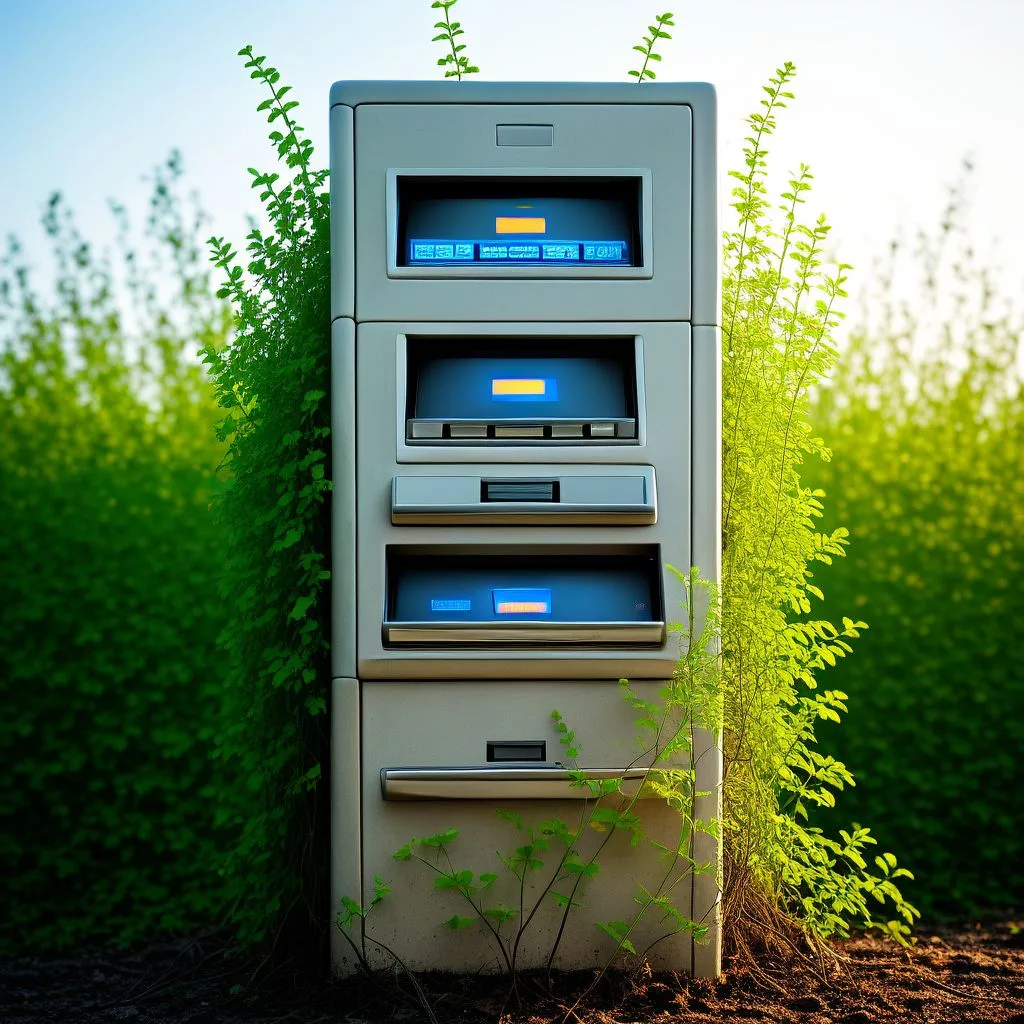In South Africa, ATMs are disappearing fast as people turn to mobile banking and cashless payments. Major banks have closed hundreds of ATMs, while Capitec Bank has actually added more. This change is happening because using smartphones is easier and safer than carrying cash, especially with rising crime. As technology improves, banking becomes more about convenience, with digital apps offering many services that ATMs can’t match. The future of banking looks bright and fast, focusing on quick and safe ways to manage money!
What is causing the decline of ATMs in South Africa?
The decline of ATMs in South Africa is primarily driven by the rise of mobile banking, increasing cash-related crime, and the convenience of point-of-sale systems. Major banks have reduced ATM numbers as consumers embrace digital transactions and cashless payment methods, reflecting a broader shift towards a digital banking revolution.
The Decline of ATMs in South Africa
In recent times, personal banking has dramatically shifted towards becoming more user-centric and accessible. This transformation has also brought about a subtle, yet noteworthy trend: the gradual reduction of ATMs by banks across South Africa. MyBroadBand reports that the last year witnessed a significant drop in the number of ATMs, as four of the top five banks collectively closed 233 units. Specifically, Standard Bank eliminated 76, ABSA shut down 75, NedBank closed 42, and FNB reduced their count by 40. Contrarily, Capitec Bank bucked this trend, expanding its ATM network by 367 units, growing from 8,382 to 8,749 within just five months, from March to August 2024.
Capitec’s notable increase in ATM units can be attributed to a significant rise in partner and retail site ATMs. Unlike other major banks, since 2023, Capitec has incorporated partner ATMs into its total count. This move deviates from the industry norm where banks typically exclude these units from their overall figures. The last separate report from Capitec indicated that 40% of its ATMs were proprietary, while the remaining 60% were located in partner sites and retail locations.
Driving Factors Behind the ATM Reduction
Several reasons underpin the nationwide decline in ATMs. Foremost among these is the burgeoning convenience of mobile banking, which allows users to perform functions such as depositing money, paying bills, and shopping directly from their smartphones. This ease of access has led many individuals to shift from handling physical cash to using bank cards or tap-and-pay features on smart devices.
Another significant factor contributing to the decline in ATM usage is the increasing crime rate associated with carrying large amounts of physical cash. BusinessTech highlights a surge in ATM-related crimes, including hijackings and bombings. The widespread adoption of on-hand point-of-sale (POS) systems and card terminals has also lessened the need for small businesses to deal in cash, further reducing the reliance on ATMs.
POS systems, such as YOCO, offer enhanced convenience for both consumers and small business owners, making cashless transactions more seamless and efficient. Additionally, retailers and banking partners have facilitated the redundancy of ATMs by allowing customers to withdraw money and pay for utilities at retail checkouts, providing a safer and more convenient alternative to traditional banking methods.
The Digital Banking Revolution
This shift away from ATMs is part of a broader digital revolution that has swept through various sectors, including banking and finance. The transition to digital banking mirrors the rise of e-commerce, social media, and streaming services, all of which prioritize convenience and immediacy. This trend dates back to the late 20th century when personal computers and the internet began to revolutionize how people accessed services and information.
Initially, ATMs revolutionized banking after their introduction in the 1960s, offering unprecedented convenience by allowing customers to perform basic banking tasks without visiting a branch. Over time, ATMs became a symbol of modern banking. However, as technology continued to advance, the limitations of ATMs became more apparent.
The current decline in ATM usage is part of an ongoing digital transformation in banking. Mobile banking apps now offer a plethora of services that far exceed the capabilities of ATMs. These apps enable real-time account monitoring, instant transfers, and even investment opportunities. The integration of artificial intelligence and machine learning into these platforms has further enhanced their functionality, providing personalized financial advice and sophisticated fraud detection.
Moving Towards a Cashless Society
The shift towards a cashless society has been accelerated by the global COVID-19 pandemic. Social distancing measures and hygiene concerns have dissuaded the use of physical cash, driving more people to adopt digital payment methods. Contactless payments have become increasingly popular, and digital wallets like Apple Pay, Google Wallet, and Samsung Pay have gained widespread acceptance.
In tandem with these developments, financial inclusion has also made significant strides. Mobile banking has made financial services more accessible to underserved populations, particularly in rural and remote areas. In regions with limited banking infrastructure, mobile money services have become a lifeline, enabling people to save, transfer money, and pay bills with ease. This has had a transformative impact on economic development and poverty alleviation.
The reduction in ATMs and the rise of digital banking highlight a broader societal shift towards digitization and connectivity. As technology continues to evolve, the banking sector is poised to witness further innovations that enhance convenience, security, and accessibility. The future of banking may include biometric authentication, blockchain-based transactions, and even more integrated financial ecosystems.
The Future of Banking: Balancing Convenience and Security
As the banking sector navigates this digital era, it is crucial to consider the implications for security and privacy. While digital banking offers numerous benefits, it also introduces new challenges. Cybersecurity threats are a significant concern, necessitating substantial investments in robust security measures to protect customer data. Regulatory frameworks must adapt to ensure that digital financial services remain secure and trustworthy.
In summary, the decline of ATMs and the rise of digital banking signify a major shift in the financial landscape. This transformation presents exciting opportunities for innovation and improvements in how we manage our finances. As banks continue to evolve, they must find a balance between the demand for convenience and the need for security and inclusivity. The future of banking promises to be dynamic and ever-changing, driven by technological advancements and shifting consumer preferences.
FAQ on the Evolution of Personal Banking in South Africa
What is causing the decline of ATMs in South Africa?
The decline of ATMs in South Africa is mainly due to the increasing popularity of mobile banking and cashless payment methods. Major banks have closed many ATMs as consumers transition to digital transactions, driven by the convenience and safety of mobile banking, especially amidst rising crime related to cash handling.
How has Capitec Bank responded to the trend of declining ATMs?
Contrary to the trend of ATM reductions, Capitec Bank has expanded its ATM network significantly, adding 367 units in just five months. This growth is attributed to its inclusion of partner and retail site ATMs in its overall count, offering more accessibility to customers compared to other banks.
What are some advantages of mobile banking over traditional ATMs?
Mobile banking apps provide numerous advantages over ATMs, including real-time account monitoring, instant money transfers, bill payments, and access to investment opportunities. These apps also often incorporate advanced technologies like AI, offering personalized financial advice and enhanced fraud detection.
How has the COVID-19 pandemic influenced banking trends?
The COVID-19 pandemic has accelerated the shift towards a cashless society as people have become more conscious of hygiene and social distancing. This has led to increased adoption of contactless payments and digital wallets, making cashless transactions more popular and convenient.
What role do point-of-sale (POS) systems play in the decline of ATMs?
Point-of-sale systems have contributed significantly to the decline of ATMs by providing businesses with efficient cashless transaction methods. With POS systems, both consumers and small businesses can process payments without needing to withdraw cash from ATMs, thus reducing ATM usage.
What does the future hold for personal banking in South Africa?
The future of personal banking looks promising, focusing on greater convenience and security. As technology continues to evolve, innovations such as biometric authentication, blockchain transactions, and integrated financial ecosystems are expected to reshape the banking landscape, improving accessibility and enhancing user experiences.








